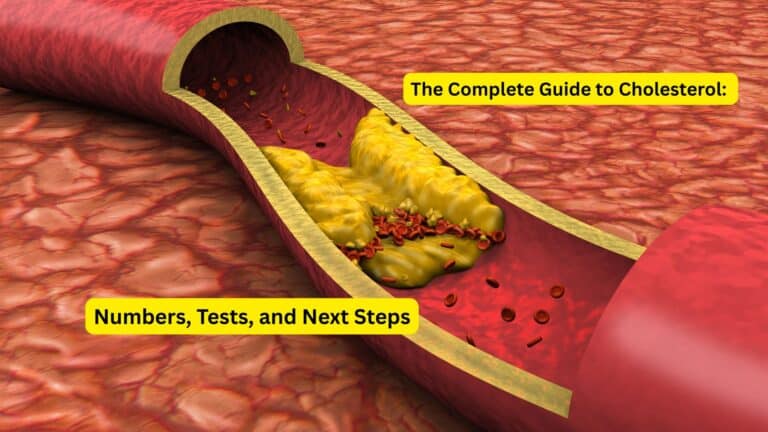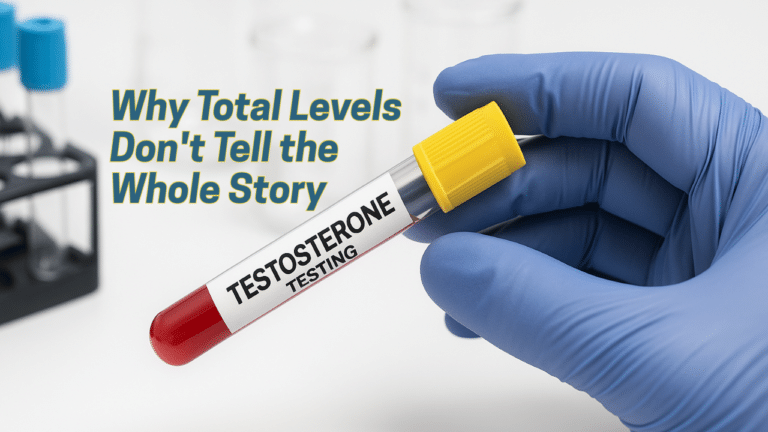Liver function tests (LFTs)—also known as liver panels or liver chemistries—are blood tests that measure enzymes, proteins, and byproducts to evaluate how well the liver is performing its critical functions including metabolism, detoxification, protein synthesis, and bile processing. These tests serve as essential screening tools that help healthcare providers detect liver injury, monitor disease progression in conditions like hepatitis and cirrhosis, assess potential medication side effects, and guide treatment decisions. Understanding what these tests measure and how to interpret their results can empower patients to take a more active role in managing their liver health.
The Critical Role of Liver Function Testing
The liver performs over 500 vital functions in the human body, making it one of our most essential organs. When liver function becomes compromised, it can affect everything from blood clotting and protein production to toxin removal and nutrient processing. Early detection through routine liver function testing can identify problems before symptoms appear, potentially preventing serious complications and allowing for timely intervention.
Healthcare providers typically order liver function tests in several scenarios: as part of routine health screenings for at-risk populations, when patients present with symptoms suggestive of liver problems (such as jaundice, fatigue, or abdominal pain), to monitor known liver conditions, or to assess potential side effects from medications that can affect liver function. The beauty of these tests lies in their ability to provide a comprehensive picture of liver health through a simple blood draw.
What Makes Liver Function Tests So Valuable
The power of liver function testing comes from analyzing multiple markers together to create a complete picture of liver health. Rather than relying on a single measurement, healthcare providers examine patterns across different types of markers—enzymes that indicate cell damage, proteins that reflect synthetic function, waste products that show excretory capacity, and clotting factors that demonstrate the liver’s ability to produce essential blood components.
If you’d like to see how different liver function panels stack up—and which one might be right for your situation—click here to see our comparison table and liver function panel selection guide.
Key Markers & What They Indicate
Understanding what each marker in a liver function test measures helps patients better comprehend their results and engage more effectively with their healthcare providers. Each marker provides unique insights into different aspects of liver function, and when interpreted together, they create a comprehensive assessment of liver health.
| Marker | Type | Function / Clinical Insight |
| AST & ALT | Enzymes | Indicators of liver cell injury; ALT is more liver-specific, and the AST/ALT ratio (De Ritis ratio) helps infer causes—ratios greater than 2:1 often suggest alcoholic liver disease |
| ALP & GGT | Enzymes | ALP points to biliary obstruction; GGT validates ALP origin (liver vs. bone) and flags alcohol use or cholestasis |
| Total, Direct & Indirect Bilirubin | Waste product | Tests excretory function; elevated bilirubin—especially unconjugated or conjugated—can indicate liver disease or bile duct obstruction |
| Albumin & Total Protein | Proteins | Reflect synthetic function; low levels suggest chronic liver dysfunction or poor nutrition |
| Prothrombin Time (PT) / INR | Coagulation | Indicates how well the liver synthesizes clotting factors; prolonged PT/INR signifies impaired synthetic capacity |
| Lactate Dehydrogenase (LDH) | Enzyme | A general tissue enzyme; elevated LDH can signal liver cell damage—though not liver-specific |
| Ferritin | Protein | Elevated levels may reflect iron overload and chronic liver injury, useful in conditions like hemochromatosis |
| Alpha-Fetoprotein (AFP) | Tumor marker | Elevated in liver cancer (HCC); used for surveillance in high-risk patients |
Liver Enzymes: The Front-Line Indicators
ALT (Alanine Aminotransferase) and AST (Aspartate Aminotransferase) are perhaps the most commonly discussed liver markers because they directly indicate liver cell damage. When liver cells are injured or die, these enzymes leak into the bloodstream, causing elevated levels in blood tests. ALT is considered more liver-specific than AST, making it a particularly sensitive indicator of liver problems.
The ratio between AST and ALT, known as the De Ritis ratio, provides valuable diagnostic clues. In healthy individuals, this ratio typically falls below 1.0, but when it exceeds 2.0, it often suggests alcohol-related liver damage. This ratio helps healthcare providers differentiate between various causes of liver injury and guide further testing or treatment approaches.
Cholestatic Markers: Detecting Bile Flow Problems
Alkaline phosphatase (ALP) and gamma-glutamyl transferase (GGT) work together to identify problems with bile flow through the liver and bile ducts. ALP can be elevated due to liver problems or bone issues, but when GGT is also elevated, it confirms that the ALP elevation originates from the liver rather than bone tissue.
GGT is particularly sensitive to alcohol consumption and certain medications, making it a useful marker for detecting early liver changes related to alcohol use or drug-induced liver injury. Elevated levels of both ALP and GGT often indicate cholestasis—a condition where bile flow is reduced or blocked.
Bilirubin: Measuring Waste Processing
Bilirubin is a yellow pigment produced when red blood cells break down, and the liver’s job is to process and eliminate it from the body. The liver function test measures three types of bilirubin: total bilirubin (the sum of all forms), direct or conjugated bilirubin (processed by the liver), and indirect or unconjugated bilirubin (not yet processed).
When bilirubin levels become elevated, it can cause jaundice—a yellowing of the skin and eyes. The pattern of bilirubin elevation helps healthcare providers determine whether the problem lies in the liver’s processing capacity, bile duct obstruction, or excessive red blood cell breakdown.
Synthetic Function Markers: Assessing Liver Production
The liver produces many essential proteins, with albumin being one of the most important. Albumin helps maintain proper fluid balance in the body and serves as a carrier for various substances in the blood. Low albumin levels can indicate chronic liver disease, malnutrition, or other chronic illnesses.
Total protein levels, which include albumin and globulins, provide additional insight into the liver’s synthetic capacity. Globulins are proteins involved in immune function and blood clotting, and their levels can help healthcare providers assess overall liver function and identify specific liver conditions.
Coagulation Testing: Blood Clotting Function
Prothrombin time (PT) and its standardized version, the International Normalized Ratio (INR), measure how long it takes blood to clot. Since the liver produces most clotting factors, these tests reflect the liver’s synthetic function. Prolonged PT/INR times indicate that the liver is not producing adequate clotting factors, which can be a sign of significant liver dysfunction.
This marker is particularly important in patients with chronic liver disease, as it helps assess disease severity and guides treatment decisions. In acute liver injury, rapidly rising PT/INR can indicate severe liver damage requiring immediate medical attention.
Interpreting Patterns
Individual liver function test results rarely tell the complete story—it’s the patterns and combinations of abnormal values that provide the most meaningful clinical information. Healthcare providers are trained to look at the entire panel together, considering which markers are elevated, which are normal, and how they relate to each other to determine the most likely cause of any abnormalities.
Hepatocellular vs. Cholestatic Patterns
One of the most fundamental distinctions in liver function test interpretation is between hepatocellular injury (damage to liver cells) and cholestatic injury (problems with bile flow). Hepatocellular patterns typically show significantly elevated ALT and AST levels, often with ALT higher than AST in cases of acute injury. The degree of elevation can provide clues about the severity and acuteness of the liver damage.
Cholestatic patterns, on the other hand, are characterized by elevated ALP and GGT levels, often with bilirubin elevation but relatively normal or only mildly elevated ALT and AST. This pattern suggests problems with bile production or flow, which could be due to bile duct obstruction, certain medications, or primary liver diseases affecting bile ducts.
The Significance of Marker Ratios
Beyond individual values, the relationships between different markers provide valuable diagnostic information. The AST/ALT ratio is perhaps the most well-known, but other ratios can also be clinically meaningful. For example, the relationship between direct and indirect bilirubin can help determine whether elevated bilirubin is due to liver processing problems or bile duct obstruction.
When interpreting these ratios, clinical context is crucial. Factors such as patient age, medication use, alcohol consumption, weight, and underlying medical conditions all influence how liver function test results should be interpreted.
Acute vs. Chronic Liver Dysfunction
The degree of elevation and the pattern of abnormalities can help distinguish between acute and chronic liver problems. Acute liver injury often produces very high enzyme levels (ALT and AST can be elevated 10-100 times normal), while chronic liver disease typically shows more modest elevations but may have more pronounced abnormalities in synthetic markers like albumin and PT/INR.
In acute liver injury, enzyme levels may change rapidly—sometimes from day to day—while chronic conditions tend to produce more stable, persistently abnormal results. This is why follow-up testing is often necessary to fully characterize liver function abnormalities.
When Normal Results Need Context
It’s important to understand that normal liver function tests don’t always guarantee a healthy liver. Some liver conditions, particularly in their early stages, may not produce abnormal blood test results. Additionally, in cases of severe, long-standing liver disease, enzyme levels may actually normalize as fewer functioning liver cells remain to release enzymes into the bloodstream.
This is why healthcare providers consider liver function tests alongside clinical symptoms, physical examination findings, imaging studies, and sometimes liver biopsy results to make accurate diagnoses and treatment recommendations.
Clinical Use Cases
Liver function tests serve multiple purposes in modern healthcare, from routine screening in asymptomatic individuals to complex diagnostic evaluations and ongoing monitoring of known liver conditions. Understanding when and why these tests are ordered helps patients appreciate their importance in maintaining overall health.
Risk-Based Screening Programs
Many healthcare organizations now recommend routine liver function testing for individuals with risk factors for liver disease, even when they have no symptoms. People with diabetes and obesity face increased risk of developing non-alcoholic fatty liver disease, making regular screening particularly important for these populations.
Other high-risk groups include individuals with a history of excessive alcohol consumption, those taking medications known to affect liver function, people with a family history of liver disease, and individuals with chronic viral infections like hepatitis B or C. For these populations, regular liver function testing can detect problems before they become symptomatic, allowing for earlier intervention and better outcomes.
Diagnostic Evaluation of Symptoms
When patients present with symptoms that could indicate liver problems—such as fatigue, abdominal pain, jaundice, dark urine, or unexplained weight loss—liver function tests serve as an essential first step in the diagnostic process. The pattern of abnormalities can guide healthcare providers toward more specific testing or imaging studies.
For example, if liver function tests show a cholestatic pattern with elevated bilirubin, the next step might be imaging studies to look for bile duct obstruction. If the pattern suggests hepatocellular injury, further testing might focus on viral hepatitis, autoimmune conditions, or toxin exposure.
Monitoring Disease Progression and Treatment Response
For patients with known liver conditions, regular liver function testing is essential for monitoring disease progression and treatment effectiveness. In chronic hepatitis, for example, improving liver function tests may indicate successful antiviral treatment, while worsening results might suggest the need for treatment adjustment.
Patients taking medications with potential liver toxicity require regular monitoring to detect problems early. This includes many common medications such as statins, certain antibiotics, and some pain medications. Regular testing allows healthcare providers to catch potential problems before they become serious.
Choosing the Right Level of Testing
Different clinical situations call for different levels of liver function testing. A basic hepatic function panel measures core enzymes and proteins such as AST, ALT, ALP, bilirubin, albumin, and total protein, making it ideal for routine screening during annual physicals or when evaluating mild symptoms like fatigue or abdominal discomfort. This entry-level test provides a focused assessment of liver function and serves as an excellent baseline before starting certain medications.
For individuals who need a more comprehensive overview—particularly those with early risk factors such as elevated cholesterol, mild liver enzyme abnormalities, or a family history of liver disease—a baseline liver profile adds markers like globulin, GGT, and cholesterol to the standard hepatic panel. The inclusion of GGT makes this panel particularly useful when alcohol use, gallbladder issues, or bile duct concerns may be suspected.
When patients have known liver concerns or need broader insight into their liver’s impact on blood health and coagulation, an essential liver profile builds on the baseline by adding clotting studies (PT/INR), a complete blood count, AFP (a liver tumor marker), and LDH. This level of testing is particularly valuable for ongoing monitoring in chronic conditions such as hepatitis, fatty liver disease, or cirrhosis.
For the most complex cases—patients with unexplained liver abnormalities, suspected hepatitis, long-term alcohol use, or a family history of advanced liver disease—the most comprehensive testing adds ferritin (to assess iron overload or hemochromatosis) and an acute hepatitis panel (to check for viral infections). This extensive evaluation provides the deepest level of diagnostic insight, suitable for ruling out multiple causes at once or managing high-risk individuals.
Frequently Asked Questions
What should I do to prepare for liver function tests?
Most liver function tests don’t require special preparation, but your healthcare provider may ask you to fast for 8-12 hours before the test, especially if lipid levels are being measured alongside liver markers. Continue taking your regular medications unless specifically instructed otherwise, and inform your healthcare provider about all medications, supplements, and herbal remedies you’re taking, as these can affect test results.
How often should I have liver function tests done?
The frequency of liver function testing depends on your individual risk factors and health status. For healthy adults with no risk factors, liver function tests might be included in annual physical exams. Those with risk factors such as diabetes, obesity, or alcohol use may need testing every 6-12 months. Patients with known liver disease or those taking medications that can affect the liver may require testing every 3-6 months or as directed by their healthcare provider.
Can medications affect my liver function test results?
Yes, many medications can influence liver function test results. Common medications that may cause elevated liver enzymes include statins, acetaminophen (especially in high doses), certain antibiotics, anti-seizure medications, and some herbal supplements. Always inform your healthcare provider about all medications and supplements you’re taking, and don’t stop taking prescribed medications without medical supervision.
What do mildly elevated liver enzymes mean?
Mildly elevated liver enzymes are relatively common and don’t always indicate serious liver disease. They can be caused by factors such as recent intense exercise, certain medications, viral infections, or even laboratory variations. Your healthcare provider will typically recommend repeat testing in a few weeks to see if the elevation persists, and may suggest additional tests or lifestyle modifications based on your individual situation.
Should I be concerned if my liver function tests are abnormal?
While abnormal liver function tests warrant attention, they don’t automatically indicate serious liver disease. Many factors can cause temporary elevations, and some people have persistently mild abnormalities without significant health consequences. The key is working with your healthcare provider to understand what the results mean in the context of your overall health, symptoms, and risk factors.
Can liver function improve if tests show abnormalities?
In many cases, yes. The liver has remarkable regenerative capacity, and liver function tests can improve with appropriate lifestyle changes and medical treatment. For example, people with fatty liver disease may see improvements with weight loss and dietary changes, while those with alcohol-related liver problems may see improvement with alcohol cessation. Even in more serious conditions, proper medical treatment can often slow or halt disease progression.
Conclusion
Liver function tests represent one of the most valuable tools in modern medicine for assessing liver health, detecting disease early, and monitoring treatment effectiveness. The power of these tests lies not in individual values, but in the patterns and relationships between different markers that together paint a comprehensive picture of liver function.
Understanding the basics of liver function testing—what the different markers measure, how they’re interpreted together, and when different levels of testing are appropriate—empowers patients to engage more effectively with their healthcare providers and take a more active role in managing their liver health. Whether used for routine screening in healthy individuals, diagnostic evaluation of symptoms, or ongoing monitoring of liver conditions, these tests provide essential information for maintaining optimal health.
The key to successful liver health management is the partnership between patients and healthcare providers, built on a foundation of regular monitoring, honest communication about lifestyle factors, and prompt attention to abnormal results. With proper interpretation and clinical context, liver function tests serve as an early warning system that can help prevent serious liver complications and guide timely, effective interventions when problems do arise.
Choosing the Right Liver Function Test Panel
After exploring what each liver function marker measures and how results are interpreted, you may be wondering which test panel best fits your needs.
While the specific choice should always be guided by your healthcare provider, the following comparison matrix offers a side-by-side look at common liver panels and the markers they include.
Beneath the table, you’ll also find guidance on when each level of testing may be appropriate.
| Test / Marker | Liver Profile #1 Baseline | Liver Profile #2 Essential | Liver Profile #3 Extreme | Hepatic Function Panel |
| AST (Aspartate Aminotransferase) | ✅ | ✅ | ✅ | ✅ |
| ALT (Alanine Aminotransferase) | ✅ | ✅ | ✅ | ✅ |
| Alkaline Phosphatase (ALP) | ✅ | ✅ | ✅ | ✅ |
| Bilirubin, Total | ✅ | ✅ | ✅ | ✅ |
| Bilirubin, Direct | ✅ | ✅ | ✅ | ✅ |
| Bilirubin, Indirect | ✅ | ✅ | ✅ | |
| Albumin | ✅ | ✅ | ✅ | ✅ |
| Globulin | ✅ | ✅ | ✅ | |
| Total Protein | ✅ | ✅ | ✅ | ✅ |
| GGT (Gamma-Glutamyl Transferase) | ✅ | ✅ | ✅ | |
| Cholesterol, Total | ✅ | ✅ | ✅ | |
| Lactate Dehydrogenase (LD) | ✅ | ✅ | ||
| Prothrombin Time (PT/INR) | ✅ | ✅ | ||
| CBC with Differential & Platelets | ✅ | ✅ | ||
| Alpha-Fetoprotein (AFP) | ✅ | ✅ | ||
| Ferritin | ✅ | |||
| Acute Hepatitis Panel | ✅ |
More Details
1. Hepatic Function (Liver) Panel
The hepatic function panel is the classic entry-level screening test for liver health. It measures core enzymes and proteins such as AST, ALT, ALP, bilirubin, albumin, and total protein.
This panel is most useful when a physician wants a quick, focused assessment of liver function—such as during an annual physical, when evaluating mild symptoms (like fatigue or abdominal discomfort), or as a baseline before starting certain medications.
It’s ideal for people who need a basic snapshot of how well their liver is processing, detoxifying, and producing proteins, without diving into more specialized markers.
2. Liver Profile #1 (Baseline)
The baseline profile expands beyond the hepatic panel to include additional markers like globulin, GGT, and cholesterol.
It’s a good choice for individuals who want a more comprehensive overview than the hepatic panel alone—especially if there are early risk factors such as elevated cholesterol, mild liver enzyme abnormalities, or a family history of liver disease.
The inclusion of GGT also makes this panel helpful when alcohol use, gallbladder issues, or bile duct concerns may be suspected. In short, this panel is best when you want to go one step deeper than screening, without committing to a full diagnostic workup.
3. Liver Profile #2 (Essential)
The essential panel builds on the baseline by adding clotting studies (PT/INR), a complete blood count, AFP (a liver tumor marker), LDH, and GGT.
This makes it useful for patients with known liver concerns or those who need broader insight into their liver’s impact on blood health, coagulation, and potential cancer risk.
It’s particularly valuable for ongoing monitoring in chronic conditions such as hepatitis, fatty liver disease, or cirrhosis.
In practice, this panel suits someone who requires regular follow-up testing or a more detailed first look if there are clear clinical suspicions of liver dysfunction.
4. Liver Profile #3 (Extreme)
The extreme panel is the most comprehensive, adding ferritin (to assess iron overload or hemochromatosis) and an acute hepatitis panel (to check for viral infections) on top of all the markers included in Profile #2.
This panel is best reserved for situations where a thorough, all-angles evaluation is needed—for example, in patients with unexplained liver abnormalities, suspected hepatitis, long-term alcohol use, or a family history of advanced liver disease.
It may also be used when a patient or provider wants to rule out multiple causes at once. This option provides the deepest level of diagnostic insight, suitable for complex cases or high-risk individuals.






